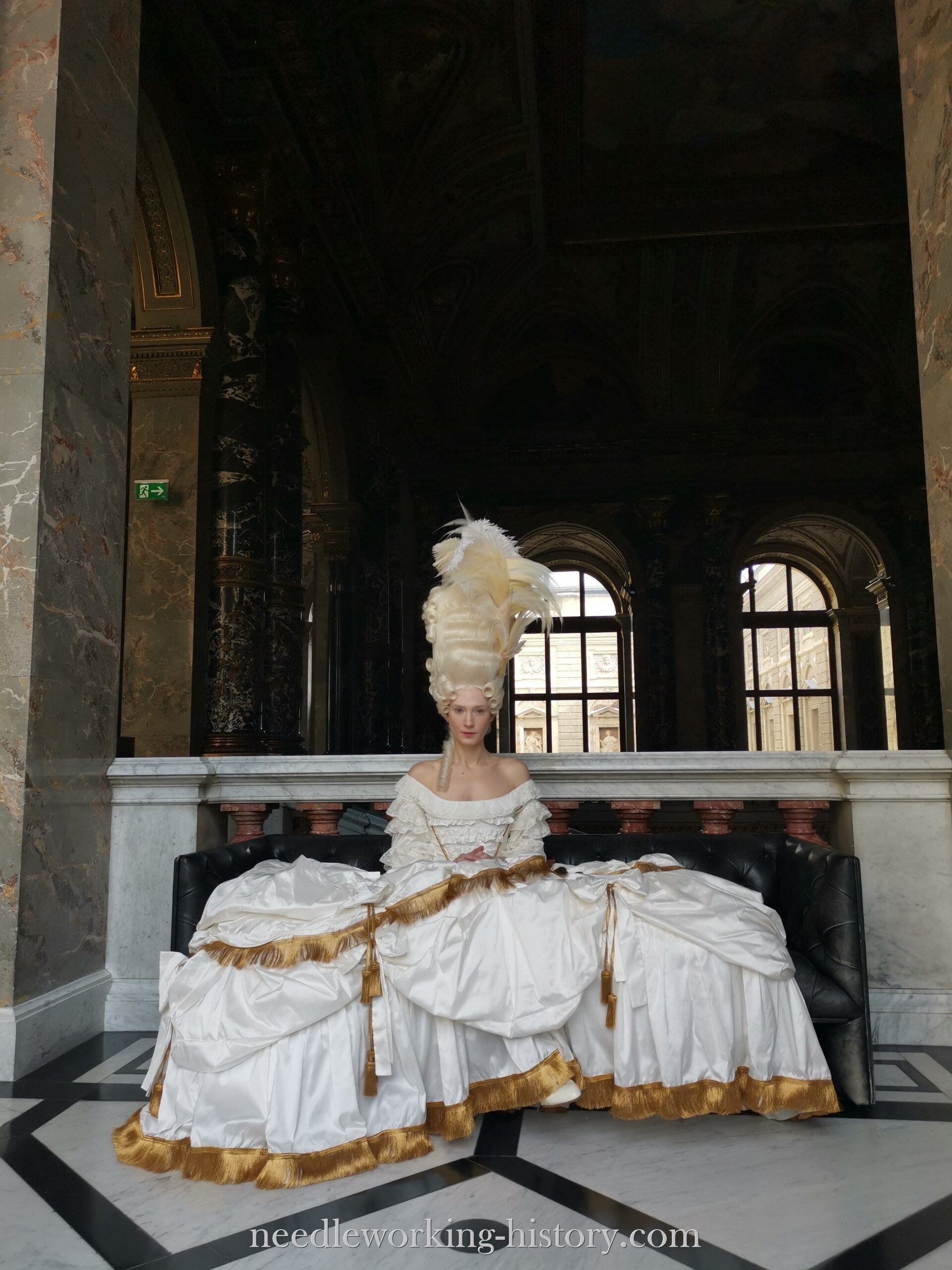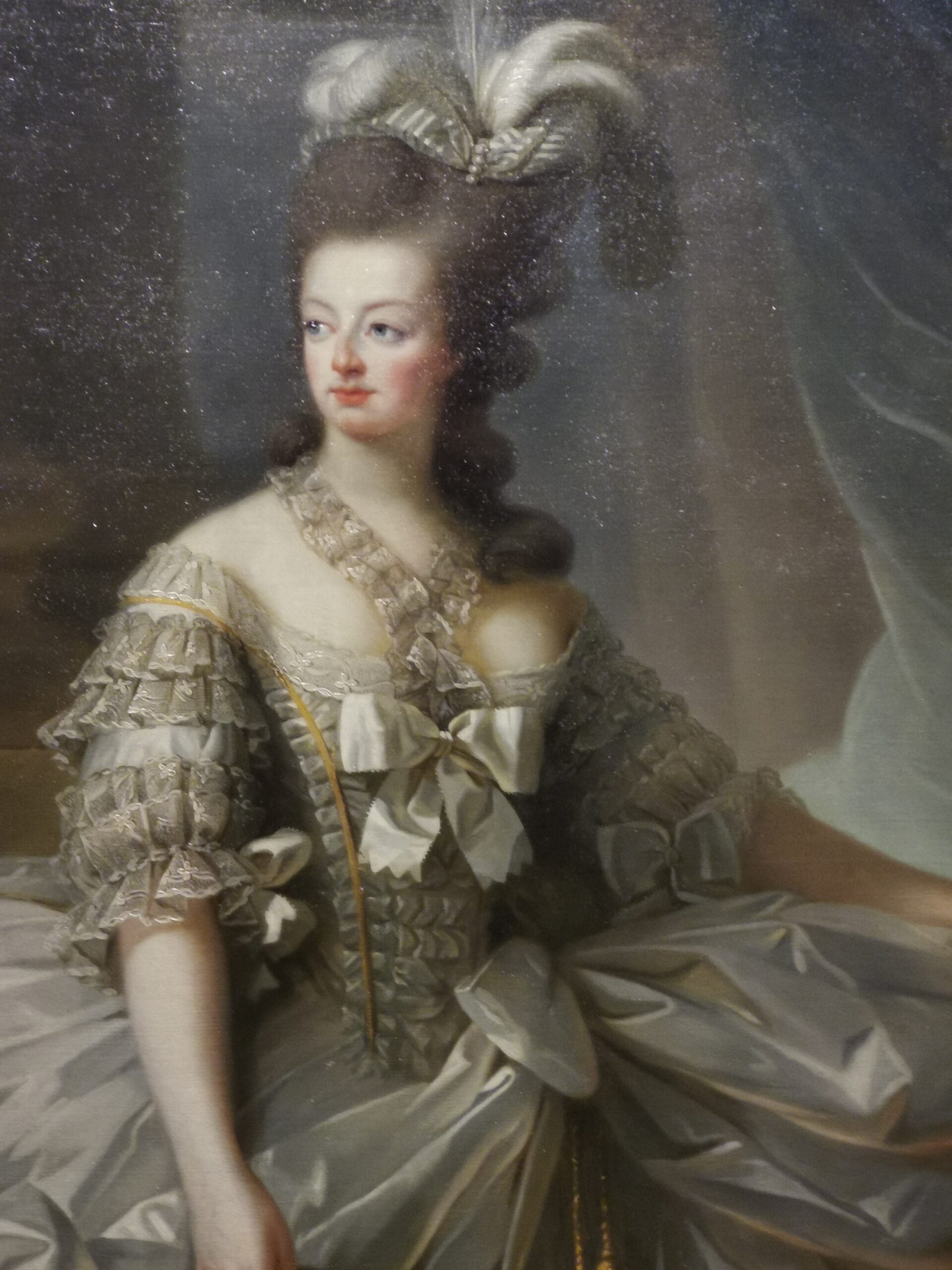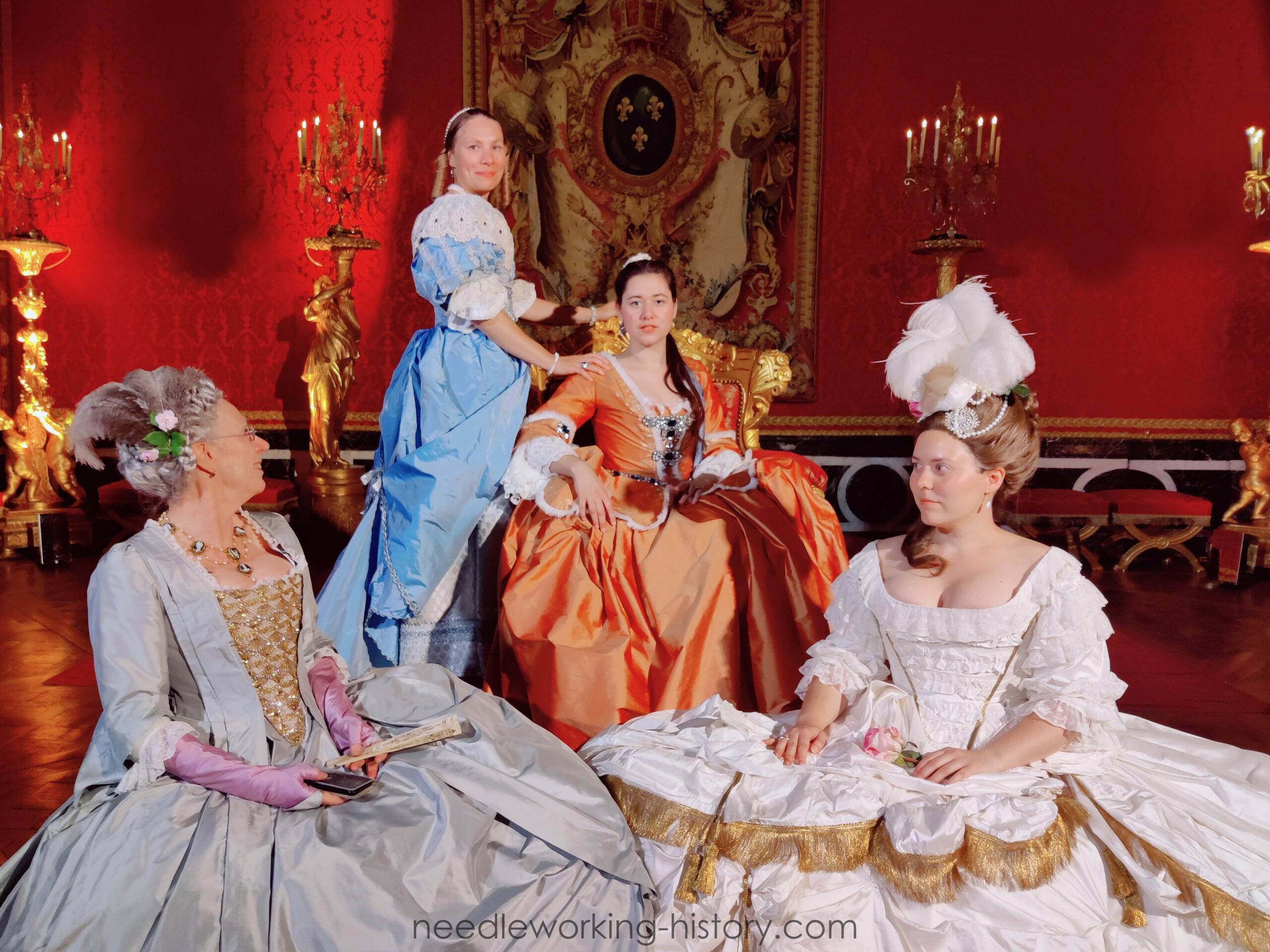A lot of time has passed since my last Marie Antoinette post, but now I have some things to talk about. To be honest, there were a lot of things that I planned but that didn’t happen, but I’m not really sorry. I’m happy that everything turned out great in the end. Different but great!
So first things first: My dress was chosen to be exhibited alongside a few other dresses from my colleagues at castle Ambras! I was so excited that I updated a few things on the dress and I want to talk a bit about that today.
The train itself was okay, but I wasn’t happy with the pleating on the top so I undid the waistband and rearranged the pleats. I then sewed on the waistband again and I was done. This took me probably an hour to do but it looks SO much better now. And I know I took pictures of the finished train but I can’t find it…but since the train is not on display it’s not so important.
The next change was to be done on the bodice. I hated the lace so much, but at the time I hadn’t found another one and I had to finish the dress so that my teacher could grade it.
Thanks to my friend Gertraud I found the shop AnbellaDesigns, an austrian shop who sells deadstock lace made in europe. Since the shop is austrian I was happy that I could buy local and support an austrian based company.
The customer service was amazing! They helped me so much on my search for a perfect lace, sent me so many pictures of lace which are not in the shop (yet) and I found a beautiful cotton/rayon tulle lace and bought a ton of it.
The lace was not white but a cream or ecru color so I decided to put all my lace in a bleach bath. I bought the cheapest bathroom-bleach, dilluted it with water and put everything in, and 15 minutes later the lace was a all lovley and white. Not a harsh, bright, blue-ish white, but a warm, creamy white – perfect because the silk of my dress is also a warmer white.
Then I started with attaching the new lace. As you can see in one picture it’s much more delicate and soft looking and I truly love it now.
And then I had to make a little hat/fascinator/whatever you wanna call the thing which goes on her head 😀 I did it because I didn’t know that the museum got a wig made for the photoshooting and in the end no hats/fascinators went on display at the castle.
The hat-thingy was made with a teardrop-shaped stiff linen, covered with silk and decorated with silk damast. The feathers are ostrich feathers and I sewed 2-3 together to get the fullness. To get a better shape I used a curling iron.
And then everything was ready fot the catalouge shooting! I packed all my stuff (it was so much and so heavy) and headed to the museum where the dresses were stored. At the day of the shooting I went there to be a dresser for my gown and other dresses from my colleagues and I had a lovley time! It was so nice to meet so many different people, see how they walk in historical/historical inspired costumes. They were all so different but all were beautiful.
Of course a doggy picture for you – Clayton the whippet!
And since I often hear the question: But can you sit in this dress? – My model Johanna sat down in it and as far as she said it was comfortable!
The exhibition start at castle Ambras
And it finally happened. The exhibition startet at june 17th in castle Ambras. It was so nice to finally see everything on display and also see all the amazing objects which are in the exhibition. From an original embroidery done by Marie Antoinette herself, to jewellry to 18th century stays and a hoop skirt. There is so much to see and discover.
I had a beautiful time there, I even met the curators again: Katja Schmitz von Ledebur, Stefan Zeisler and Veronika Sandbichler.
They did such a great job and I’ll be forever thankful that I was allowed to be a part of it.
















